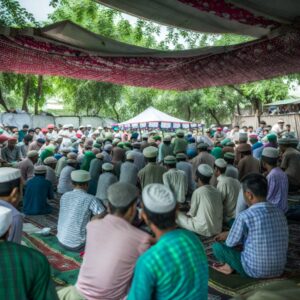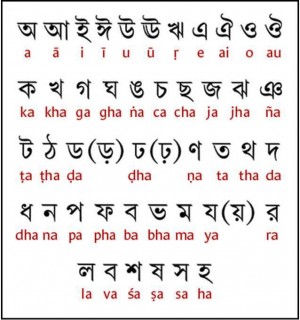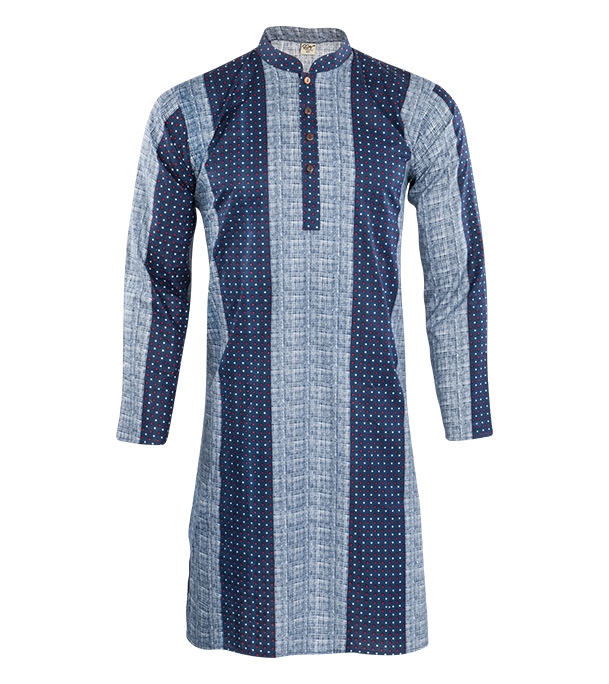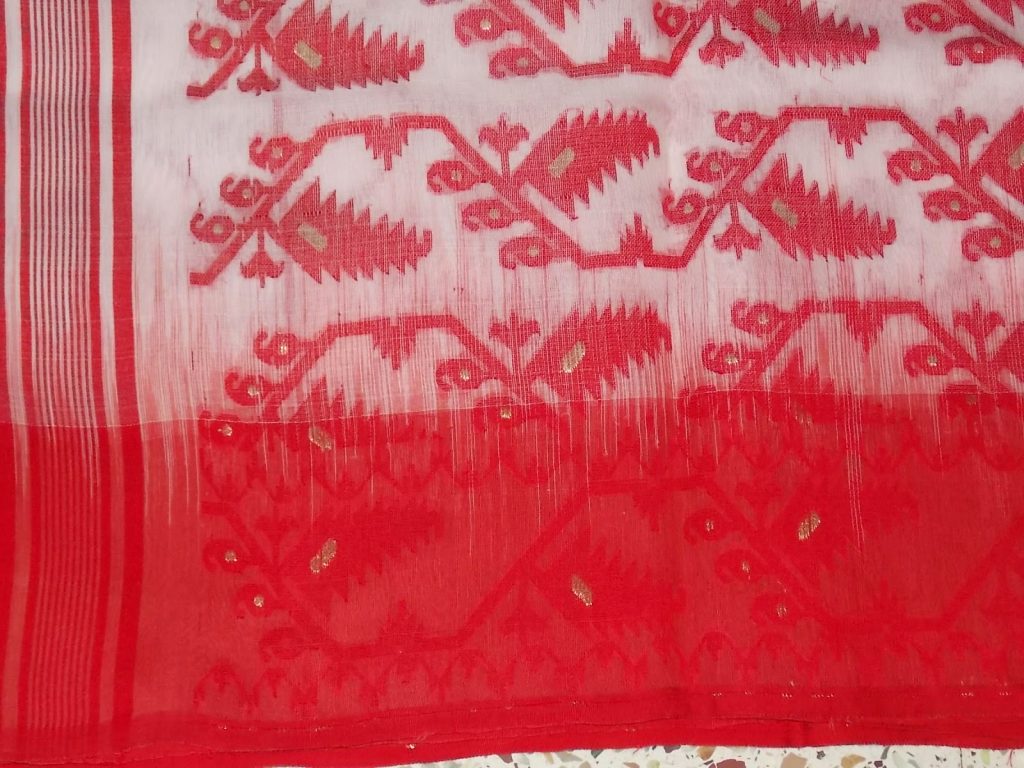Bangladesh is a South East Asian country of the world. The language in which the people of Bangladesh talk is known as “Bangla”. The majority of the Bangladeshi people speak in Bengali language. This Bengali language is the first language of about 98% people of the whole population.
What is the Official Language of Bangladesh?
‘Bangla’ or ‘Bengali’ is the official language of Bangladesh. But one may surprisingly noticed that there are a great varieties of Bengali language and some other Regional languages also in Bangladesh. English is the second official language of the country.
What Language Do They Speak in Bangladesh
In Bangladesh, the primary language spoken is Bengali, locally known as Bangla. It is the mother tongue of about 98% of the population and is used in everyday communication, education, administration, media, and cultural life. Bengali is deeply tied to national identity, especially after the historic Language Movement of 1952. In addition to Bengali, people in different regions speak local dialects like Sylheti, Chittagonian, and Rangpuri. Indigenous communities also use their own languages, such as Chakma, Marma, and Garo. While English is widely taught and used in higher education and business, Bengali remains the dominant spoken and written language.
National Language of Bangladesh
The national language of Bangladesh is Bengali (Bangla). It was officially recognized after the historic Language Movement in 1952, during which several people sacrificed their lives to protect their linguistic rights. Bengali is used in all government proceedings, education, and media, and is a powerful symbol of national unity and pride. The language boasts a rich literary heritage, with world-renowned authors like Rabindranath Tagore and Kazi Nazrul Islam contributing significantly to Bengali literature. The script used is the Bengali script, which is beautiful and expressive. As a unifying force, Bengali plays a central role in the cultural identity of Bangladesh.
What Languages Are Spoken in Bangladesh
While Bengali is the official and most widely spoken language in Bangladesh, the country is linguistically diverse. Alongside Standard Bengali, several regional dialects such as Sylheti, Chittagonian, Noakhali, and Rangpuri are spoken. Indigenous communities across the country speak over 40 different languages, including Chakma, Marma, Mro, Santali, Garo, and Tripuri. These indigenous languages belong to families like Tibeto-Burman, Austroasiatic, and Dravidian. English is also commonly used in education, business, and government communication. Though Bengali dominates, this multilingual landscape adds richness to the cultural fabric of Bangladesh and reflects the country’s ethnic and linguistic diversity. Preservation efforts are ongoing for endangered tongues.
Bangladesh Main Language
The Bangladesh main language is ‘Bangla’ or Bengale. Bangladesh Language is very strong in speaking and writing. Bangla language has very historical and prestigious structure. Only native Bangla speaking people can speak Bangladesh language properly. Any foreigner can learn Bangla language within a few months but they can not express their emotion with exact pronunciation.
Bangladesh Language has all form of letters to express someone’s willingness and emotion. Bangladesh Language has vowel and consonant that is very important for any languages in the world. With the combination of Vowel and Consonant, someone can express his/her own words.
Bangladesh Language Letters
Bangladesh Language has 11 vowels and 39 consonants those help to pronounce any worlds using by any people in the world. So, Bangladesh Languages is very strong in alphabetically.
Bangla language pronounce is not so easy to say but it is possible to speak by a foreigner within a few months of training. Bangladesh languages have their style for speaking and writing. Though Bangla speaking people are living in India there is little difference in pronunciation.
Total Bangla speaking people
There are more than 230 million Bangla or Bengali speaking people in this world. More 193 million are native Bangla or Bengali, Bengale speaking people.
Though, Bangladesh official language is ‘Bangla’ but English is using in business houses everywhere in Bangladesh.
Example of Bangla – The main language of Bangladesh.
(1)
Bangla: Tumi Kemon Acho? – তুমি কেমন আছ?
English: How are you?
(2)
Bangla : Ami Bhalo Achi. = আমি ভাল আছি
English: I am fine.
(3)
Bangla: Tomar Nam Ki? = তোমার নাম কি?
English: What is your name?
(4)
Bangla : Amar Nam Marzuk =আমার নাম মারজুক।
English: My name is Marzuk.
(5)
Bangla: Ami Bangladesh ke Bhalobashi = আমি বাংলাদেশ কে ভালবাসি।
English: I love Bangladesh.
History of Language of Bangladesh
Bengali is the seventh positional language which is mostly spoken native language and the 23rd official language in the world. Bengali language is emerged from the Sanskrit as well as Magadhi Prakrit language at about 1000-1200 AD and it is known as an Indo-Aryan language. After having much transformation the Bengali language has reached today’s form. The half of the Bengali vocabulary is the modified form of the Sanskrit language.
Influence of Foreign languages in Bangla
In Bengali language, a great use of various foreign languages can be seen like Persian, Arabic, and English etc. “Khoda”, “Hafez”, “Tarikh”, “Kolom”, “Bonduk”, “Television”, “Telephone”, “Video”, “Radio” etc. various foreign words now have become a part of the Bengali language. The latest form of Bengali language comes from the dialect of the Nadia region and it has been transformed during the 19th to the early 20th century.
Bengali Language Movement
To get this Bengali language as an official language, many lives have been sacrificed. In 1952, we received a political movement regarding the Bengali language to make it free from the evil clutch of the then dominating Pakistan. This movement has catalyzed the arrival of the new language in the world history namely “Bangla” after bloodshed. This movement and its subsequent struggles gave the Bangladeshi people an inspiration to prevent Urdu from being the state language of Bangladesh, which was then called East Pakistan. The then Pakistani government tried much hard to make the Urdu language as the official language.
But it is true that as the Bengali people speaks in Bengali language; they express all their joys, sorrows, happiness, and sufferings in this Bengali language. So it was never possible for the Bengali people to take another as the main official language. The people had a love and affection for their own language. So this love inspired them even to sacrifice their own lives to keep the dignity if the language. After that the Bangla was achieved as the First language of Bangladesh.
International Mother Language Day
International Mother Language Day is ’21 February’ has been being observed since 2000 to promote peace and multilingualism. The date corresponds to the day in 1952 when students from the Dhaka Medical College (DMC), University of Dhaka (DU), Jagannath University (JU), demonstrating for the recognition of ‘Bangla’ or Bengali as one of the 2 national languages of East Pakistan (Now Bangladesh), were brutally shot dead of Rafique, Salam, Jabbar, Barkat, Shafiur and few others by Pakistani police personnels under the ruling government of Pakistan near the Dhaka Medical College in Dhaka.
Shadhu Vasha and Chalita Vasha
Bengali language has two different literally style. One is “Shadhu vasha”, and the other is “Chalita vasha”. Shadhu vasha is the elegant and traditional style which is based on the 16th century middle Bangla. On the other hand, Chalita vasha is modern style which is easier to use than the Shadhu vasha. So Shadhu vasha is not suitable for the communication of any institution now a days and Chalita vasha takes the place. People always want to talk in an easy style. So as the “Chalita vasha” is much heavier, so this heaviness has turned into a threat of its own existence. The difference and change between these two styles is not very deep. They are slightly changed and modified. If one goes through the vocabulary, one can find that the vocabularies are so close and not so different. The main change is in the verb and the pronoun. Otherwise the rest of the words are somewhat same.
38 languages in Bangladesh
There are about 38 language in Bangladesh. There are some languages also which have no writing form. They have only the spoken version. If we go overall the whole country, we can find different languages in Bangladesh are :
- Assamese,
- Chak and Chakma,
- Bawn Chin,
- Darlong,
- Pnar,
- Mizo,
- Ho,
- Khasi,
- Chittagonian,
- Rajbanshi,
- Santali,
- Sylheti,
- Usui,
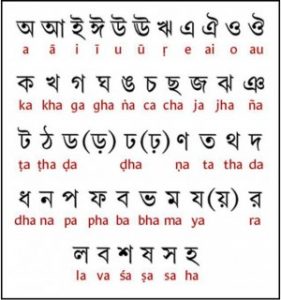
- Garo,
- Falam Chin,
- Tippera,
- Pankhu,
- Khumi Chin,
- Kok Borok,
- War,
- Shendu,
- Tangchangya,
- Kurux,
- Meitei,
- Oraon
- Sadri,
- Koch,
- Mru,
- Megam,
- Hajong,
- Rongpuri,
- Rohingya etc.
Regional Language in Bangladesh
All these languages have their own ethnic and geographical origins. Sometimes there are some religious origins can also be noticed. But this is so true that these languages have great influences upon their own particular geographical areas. They are much alive there than the other parts of Bangladesh. Like as:
- Chittagonian language is used in the Chittagong city and the south parts of Bangladesh.
- Sylheti language is used in mainly Sylhet and some northeast sections of the country.
- Khasi is spoken by the Northern Mymensingh people.
- Assamese, Pnar, Mundari, Santali are spoken by the minority people of the Rangpur district.
- Chakma, Hajong, Garo, Shendu etc. are used by the very minority persons of the Chittagong Hill Tracts regions.
- Noakhali language is used in Noyakhali, Feni, Laxmipur and part of Chandpur and Comilla.
Many of the tribes have already forgotten their own language and at present they talk in Bangla only. This difference of the languages has added an attractive variation in Bangladesh.
Is there any language problem for a tourist?
A tourist does not require to learn Bangladeshi language to travel Bangladesh. A little learning may be comfortable for the travelers but it is not totally very important. As here English is also used, so the foreign people may not face much problem. In addition, a tourist can manage a tourist guide to visit any tourist spot for exceptional services.
Where to Learn Bengali?
If anyone wants to learn this Bengali language, there are many educational institutions where there are various courses to learn Bangla to speak with Bangladeshi people directly. It would be a good idea for a foreign businessman or NGO. Some universities like Dhaka University, there are courses in where people from abroad can easily learn Bangla and can be close to the hearts of the Bangladeshi people.
In Bangladesh, English takes the place of the second most talked language due to the English colonization and for this reason also that English is the prime language of the whole world. As English is an international language, so it is the second official language in various offices or institutions. Besides the official Bengali and English language, there are various spoken dialects of Bengali language can be found in Bangladesh. This variation has been created due to the various regions and castes of Bangladesh.
Bangladesh is one of the richest countries in South Asia. It is also the oldest country that has gained its independence from Pakistan in 1971. These two reasons make Bangladesh the most interesting and vibrant country in South Asia.
There are demand and importance of two languages are Bangla or Bengali and English. This has given rise to the demand for learning languages, that is, English and Bengali. The demand for Bengali language at present is perhaps more than that for English, that is, Bengali is spoken by most of the population of Bangladesh, while the number of those who speak English is very much less.
The main reason for the surge in the number of English speakers is the Indian school education system, which started in the early twentieth century. Since that time, many educational institutions have spread their schools all over the country. The children of the economically privileged classes are forced to study English, which was originally their mother tongue. Bengali has never been taught in these schools, thus giving rise to the demand for it, which is clearly visible in the statistics of the number of speakers of Bengali as against English.
But the main influence of the Bangladesh education system cannot be the sole reason for the popularity of Bengali. Many foreigners studying in Bangladesh also come from English-speaking backgrounds. These foreign students brought their academic experience from the English school system into their classroom experiences in a big way.
Importance of learning Bangladesh Language as foreign Students
The foreign students first learned the basics of the Bengali language and later on, from the teaching methodology of the Bangladesh education system. All these factors led to the spread of a large number of English speakers. English fluency increased in a remarkably fast manner and now, a majority of the population in Bangladesh speaks English beside their mother tongue ‘Bengali language.
There is no doubting the fact that Bengali is a more suitable option than English as a second language. It has a rich literary tradition and is very easily understood, because of its use of palindromic syllables. In addition, it has a very importance with the curriculum and there is a lot of familiarity in the Bangladesh Language. That is why many English speakers opt for learning Bengali to enhance their knowledge and lean deeply with Bengali Language.
The standard of Bengali language that has emerged as the most widely used language in Bangladesh. The Language of Bangladesh has even gained the status of international mother language. It is therefore clear that the bilingualism of Bangladesh is a product of a diverse society
Bangla language
The Bengali language is the official language of BD. However, there are a number of different dialects in Bangladesh which may be spoken as a common language.
Even though Bengali has been proclaimed as the Bangladeshi national language, a lot of people still speak their native tongue. Before independence, there were a lot of instances where Bengalis living in the country of India spoke Hindi.
Bangladeshi national Languge
Therefore, it’s not a surprise that this local language still continues to exist. Some of the locals even continue to speak a mix of Hindi and Bengali. The majority of Bangladeshis is of the opinion that they speak a pure Bengali dialect.
So, where can you learn to speak this Bangla language? The best place to start would be at school. Of course, you may want to pick up this bangla language on your own time. Learning on your own is also very popular.
Whether or not you opt to study Bangla is not really a question, since it is considered as the official language of the country as a main language of Bangladesh. If you’re planning to spend some time outside the country, you will be required to know this basic language in order to interact with other people.
Learn Bangla
In order to understand Bangladesh, you need to have this language as one of your main languages. Even if you don’t want to take this formal way of learning, you can still have fun by picking up an actual Bangla writing manual.
These books may come in books or cassette. You can get these online or from your local bookstore.
A typical Bangla writing manual will usually contain grammar, a glossary and also vocabulary for learning the Bangla language. You’ll also find some exercises that will help you learn how to write and speak the language properly.
When you start learning Bangla language, you will also need to learn about how to use your pens, pencils and even writing utensils properly. Since these are common household items in Bangladesh, it’s very easy to learn how to use them.
If you want to learn other aspects of Bangla writing, then there are a number of websites on the internet that offer free Bangla courses which is Bangladesh official language. These websites will provide you with comprehensive lessons about the language and even let you practice the basic sentences.
Austroasiatic Languages
Austroasiatic languages are one of the oldest language families in the world, with roots in Southeast Asia. In Bangladesh, these languages are spoken by a few indigenous communities, particularly in the northern and northeastern regions. The most well-known Austroasiatic language in the country is Khasi, primarily spoken by the Khasi ethnic group living near the Sylhet border. These languages are distinct from Bengali and other mainstream languages of Bangladesh. Austroasiatic languages in Bangladesh face endangerment due to limited speakers and lack of institutional support. Preservation efforts are needed to protect this valuable part of the country’s linguistic heritage and cultural diversity.
Sylhet Division’s Languages
Sylhet Division, located in northeastern Bangladesh, has a unique linguistic identity. The most prominent language here is Sylheti, a regional dialect of Bengali, though many argue it functions as a separate language. Sylheti has its own phonetic and lexical characteristics that distinguish it from Standard Bengali. Apart from Sylheti, smaller indigenous languages like Khasi are also spoken in parts of Sylhet. While Sylheti speakers often use Bengali in formal settings, they maintain strong cultural pride in their mother tongue. The diaspora, especially in the UK, has also helped preserve and promote the Sylheti language internationally, making it a global linguistic identity.
98% of Bangladeshis Speak Bengali
In Bangladesh, Bengali (Bangla) is the mother tongue of approximately 98% of the population. It serves as the official language of government, education, media, and daily communication. This widespread usage has made Bengali a unifying cultural force in the country. The language has a rich history, particularly tied to the Language Movement of 1952, where many sacrificed their lives to preserve its use. Bengali literature, music, and cinema also play vital roles in everyday life. While other regional and indigenous languages exist, the dominance of Bengali highlights its central importance to national identity and cultural expression in Bangladesh.
Belonging to the Indo Accent
The term “Indo accent” typically refers to languages and dialects originating in the Indian subcontinent. Bengali, the predominant language in Bangladesh, belongs to the Indo-Aryan subgroup of the Indo-European language family. This linguistic lineage is marked by features such as inflection, subject-object-verb word order, and complex verb structures. Bengali shares similarities in vocabulary and syntax with other Indo-Aryan languages like Hindi, Assamese, and Oriya. Though local pronunciations and accents vary across regions, the “Indo accent” in Bangladesh reflects centuries of cultural exchange and shared history across South Asia. It gives Bengali a familiar tone for speakers of related languages in the region.
Bengali Script is the Richest Than Any Other Language in the World
The Bengali script, derived from the ancient Brahmi script, is known for its artistic curves and complex structure. It is considered one of the richest scripts globally, thanks to its historical evolution, versatility, and vast literary contributions. The script accommodates a large set of vowels and consonants, enabling precise phonetic expression. It has been used to write some of the most celebrated literary works in South Asia, including poetry by Rabindranath Tagore and Kazi Nazrul Islam. The richness also lies in its calligraphic beauty and adaptability, making it a powerful medium for cultural expression, religious texts, and modern communication in Bangladesh.
Indigenous Languages in Bangladesh
Bangladesh is home to more than 40 indigenous languages spoken by ethnic communities across the country. These languages include Chakma, Marma, Tripuri, Garo, and Santali, among others. Many of these belong to the Tibeto-Burman, Austroasiatic, or Dravidian language families. These languages are usually passed down orally and are deeply tied to cultural and spiritual traditions. Unfortunately, many indigenous languages are endangered due to lack of institutional support, urban migration, and dominance of Bengali in education and media. Efforts are being made by local NGOs and language activists to preserve these languages through documentation, education, and promoting linguistic rights.
Tibeto-Burman Languages
Tibeto-Burman languages are spoken by several ethnic communities in the Chittagong Hill Tracts and other hill areas of Bangladesh. These languages include Chakma, Marma, Bawm, Mro, and Tripuri, each belonging to the larger Sino-Tibetan language family. They feature unique phonology and grammar, different from Bengali and other Indo-European languages. These communities often maintain strong oral traditions, and their languages carry important cultural, historical, and spiritual knowledge. However, modernization and assimilation have endangered many of these languages. Linguists and NGOs have been working to preserve them through literacy programs, local language education, and inclusion in cultural policies.
West Bengal
West Bengal, a state in eastern India, shares deep linguistic and cultural ties with Bangladesh. Bengali is the official language in both regions, though there are slight variations in pronunciation, vocabulary, and script usage. The literary traditions of West Bengal and Bangladesh have collectively enriched the Bengali language. Renowned figures like Rabindranath Tagore and Bankim Chandra Chattopadhyay from West Bengal have had a significant influence on Bengali literature in Bangladesh. Despite being politically divided, the linguistic unity between West Bengal and Bangladesh remains strong, reinforcing shared identity through festivals, arts, cinema, and everyday language use across borders.
Indo-European Language
Bengali, the national language of Bangladesh, is a branch of the Indo-European language family, one of the largest and most widespread language families in the world. Within this family, Bengali belongs to the Indo-Aryan subgroup, which also includes languages like Hindi, Urdu, Punjabi, and Marathi. The Indo-European origin of Bengali connects it to many ancient and modern languages of Europe and Asia. This linguistic heritage reflects centuries of migration, trade, and cultural exchange. The structure, vocabulary, and grammar of Bengali exhibit traits common to other Indo-European languages, such as the use of gendered nouns, verb conjugations, and rich poetic traditions.
More about Bangla language
If you really want to brush up on your Bangla language, you can use a virtual classroom online or in your local library where you can listen to some English teachers who are experienced in teaching new words and new lingo. This will help you learn more about the language on your own time and at your own pace.
If you really want to learn Bangla language, it is best to get to know more about it. You can do this by starting a Bangla study in Bangladesh and also by using the best Bangla writing materials on the internet.
FAQ
1) What language does Bangladesh speak?
– The mainly Bangladeshi people speak in ‘Bengali’ (Bangla) Language.
2) What is the Official Foreign Language of Bangladesh?
– English, Arabic
3) How many Languages in Bangladesh?
– There are about 38 languages in Bangladesh..
4) Can a foreigner learn Bangladesh Language easily?
- Yes, Any foreigner can learn Bangladesh language within few months.


